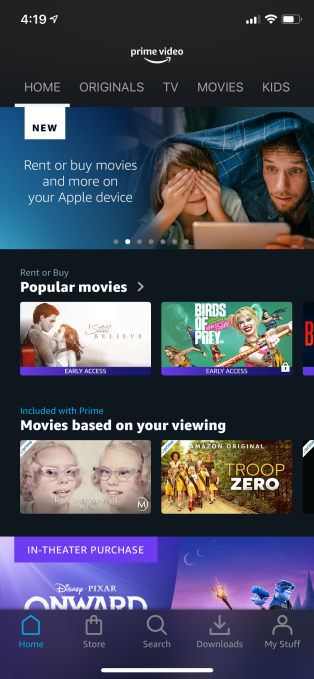Until very recently, it had begun to seem like anyone with a thick enough checkbook and some key contacts in the startup world could not only fund companies as an angel investor but even put himself or herself in business as a fund manager.
It helped that the world of venture fundamentally changed and opened up as information about its inner workings flowed more freely. It didn’t hurt, either, that many billions of dollars poured into Silicon Valley from outfits and individuals around the globe who sought out stakes in fast-growing, privately held companies — and who needed help in securing those positions.
Of course, it’s never really been as easy or straightforward as it looks from the outside. While the last decade has seen many new fund managers pick up traction, much of the capital flooding into the industry has accrued to a small number of more established players that have grown exponentially in terms of assets under management. In fact, talk with anyone who has raised a first-time fund and you’re likely to hear that the fundraising process is neither glamorous nor lucrative and that it’s paved with very short phone conversations. And that’s in a bull market.
What happens in what’s suddenly among the worst economic environments the world has seen? First and foremost, managers who’ve struck out on their own suggest putting any plans on the back burner. “I would love to be positive, and I’m an optimist, but I would have to say that now is probably one of the toughest times” to get a fund off the ground, says Aydin Senkut, who founded the firm Felicis Ventures in 2006 and just closed its seventh fund.
“It’s a perfect storm for first-time managers,” adds Charles Hudson, who launched his own venture shop, Precursor Ventures, in 2015.
Hitting pause doesn’t mean giving up, suggests Eva Ho, cofounder of the three-year-old, seed-stage L.A.-based outfit Fika Ventures, which last year closed its second fund with $76 million. She says not to get “too dismayed” by the challenges.
Still, it’s good to understand what a first-time manager is up against right now, and what can be learned more broadly about how to proceed when the time is right.
Know it’s hard, even in the best times
As a starting point, it’s good to recognize that it’s far harder to assemble a first fund than anyone who hasn’t done it might imagine.
Hudson knew he wanted to leave his last job as a general partner with SoftTech VC when the firm — since renamed Uncork Capital — amassed enough capital that it no longer made sense for it to issue very small checks to nascent startups. “I remember feeling like, Gosh, I’ve reached a point where the business model for our fund is getting in the way of me investing in the kind of companies that naturally speak to me,” which is largely pre-product startups.
Hudson suggests he miscalculated when it came to approaching investors with his initial idea to create a single GP fund that largely backs ideas that are too early for other VCs. “We had a pretty big LP based [at SoftTech] but what I didn’t realize is the LP base that’s interested in someone who is on fund three or four is very different than the LP base that’s interested in backing a brand new manager.”
Hudson says he spent a “bunch of time talking to fund of funds, university endowments — people who were just not right for me until someone pulled me aside and just said, ‘Hey, you’re talking to the wrong people. You need to find some family offices. You need to find some friends of Charles. You need to find people who are going to back you because they think this is a good idea and who aren’t quite so orthodox in terms of what they want to see in terms partner composition and all that.'”
Collectively, it took “300 to 400 LP conversations” and two years to close his first fund with $15 million. (Its now raising its third pre-seed fund).
Ho says it took less time for Fika to close its first fund but that she and her partners talked with 600 people in order to close their $41 million debut effort, adding that she felt like a “used car salesman” by the end of the process.
Part of the challenge was her network, she says. “I wasn’t connected to a lot of high-net-worth individuals or endowments or foundations. That was a whole network that was new to me, and they didn’t know who the heck I was, so there’s a lot of proving to do.” A proof-of-concept fund instilled confidence in some of these investors, though Ho notes you have to be able to live off its economics, which can be miserly.
She also says that as someone who’d worked at Google and helped found the location data company Factual, she underestimated the work involved in running a small fund. “I thought, ‘Well, I’ve started these companies and run these big teams. How how different could it be?” But “learning the motions and learning what it’s really like to run the funds and to administer a fund and all responsibilities and liabilities that come with it . . . it made me really stop and think, ‘Do I want to do this for 20 to 30 years, and if so, what’s the team I want to do it with?'”
Investors will offer you funky deals; avoid these if you can
In Hudson’s case, an LP offered him two options, either a typical LP agreement wherein the outfit would write a small check, or an option wherein it would make a “significant investment that have been 40% of our first fund,” says Hudson.
Unsurprisingly, the latter offer came with a lot of strings. Namely, the LP said it wanted to have a “deeper relationship” with Hudson, which he took to mean it wanted a share of Precursor’s profits beyond what it would receive as a typical investor in the fund.
“It was very hard to say no to that deal, because I didn’t get close to raising the amount of money that I would have gotten if I’d said yes for another year,” says Hudson. He still thinks it was the right move, however. “I was just like, how do I have a conversation with any other LP about this in the future if I’ve already made the decision to give this away?”
Fika similarly received an offer that would have made up 25 percent of the outfit’s debut fund, but the investor wanted a piece of the management company. It was “really hard to turn down because we had nothing else,” recalls Ho. But she says that other funds Fika was talking with made the decision simpler. “They were like, ‘If you sign on to those terms, we’re out.” The team decided that taking a shortcut that could damage them longer term wasn’t worth it.
Your LPs have questions, but you should question LPs, too
Senkut started off with certain financial advantages that many VCs do not, having been the first product manager at Google and enjoying the fruits of its IPO before leaving the outfit in 2005 along with many other Googleaires, as they were dubbed at the time.
Still, as he tells it, it was “not a friendly time a decade ago” with most solo general partners spinning out of other venture funds instead of search engine giants. In the end, it took him “50 no’s before I had my first yes” — not hundreds — but it gave him a taste of being an outsider in an insider industry, and he seemingly hasn’t forgotten that feeling.
Indeed, according to Senkut, anyone who wants to crack into the venture industry needs to get into the flow of the best deals by hook or by crook. In his case, for example, he shadowed angel investor Ron Conway for some time, working checks into some of the same deals that Conway was backing.
“If you want to get into the movie industry, you need to be in hit movies,” says Senkut. “If you want to get into the investing industry, you need to be in hits. And the best way to get into hits is to say, ‘Okay. Who has an extraordinary number of hits, who’s likely getting the best deal flow, because the more successful you are, the better companies you’re going to see, the better the companies that find you.”
Adds Senkut, “The danger in this business is that it’s very easy to make a mistake. It’s very easy to chase deals that are not going to go anywhere. And so I think that’s where [following others] things really helped me.”
Senkut has developed an enviable track record over time. The companies that Felicis has backed and been acquired include Credit Karma, which was just gobbled up by Intuit; Plaid, sold in January to Visa; Ring, sold in 2018 to Amazon, and Cruise, sold to General Motors in 2016, and that’s saying nothing of its portfolio companies to go public.
That probably gives him a kind of confidence that it’s harder to earlier managers to muster. Still, Senkut also says it’s very important for anyone raising a fund to ask the right questions of potential investors, who will sometimes wittingly or unwittingly waste a manager’s time.
He says, for example, that with Felicis’s newest fund, the team asked many managers outright about how many assets they have under management, how much of those assets are dedicated to venture and private equity, and how much of their allotment to each was already taken. They did this so they don’t find themselves in a position of making a capital call that an investor can’t meet, especially given that venture backers have been writing out checks to new funds at a faster pace than they’ve ever been asked to before.
In fact, Felicis added new managers who “had room” while cutting back some existing LPs “that we respected . .. because if you ask the right questions, it becomes clear whether they’re already 20% over-allocated [to the asset class] and there’s no possible way [they are] even going to be able to invest if they want to.”
It’s a “little bit of an eight ball to figure out what are your odds and the probability of getting money even if things were to turn south,” he notes.
Given that they have, the questions look smarter still.
from Amazon – TechCrunch https://ift.tt/3aCVoJf
via IFTTT


 Amazon declined to comment, but confirmed to TechCrunch the feature is live now for customers in the U.S., U.K., and Germany.
Amazon declined to comment, but confirmed to TechCrunch the feature is live now for customers in the U.S., U.K., and Germany.


